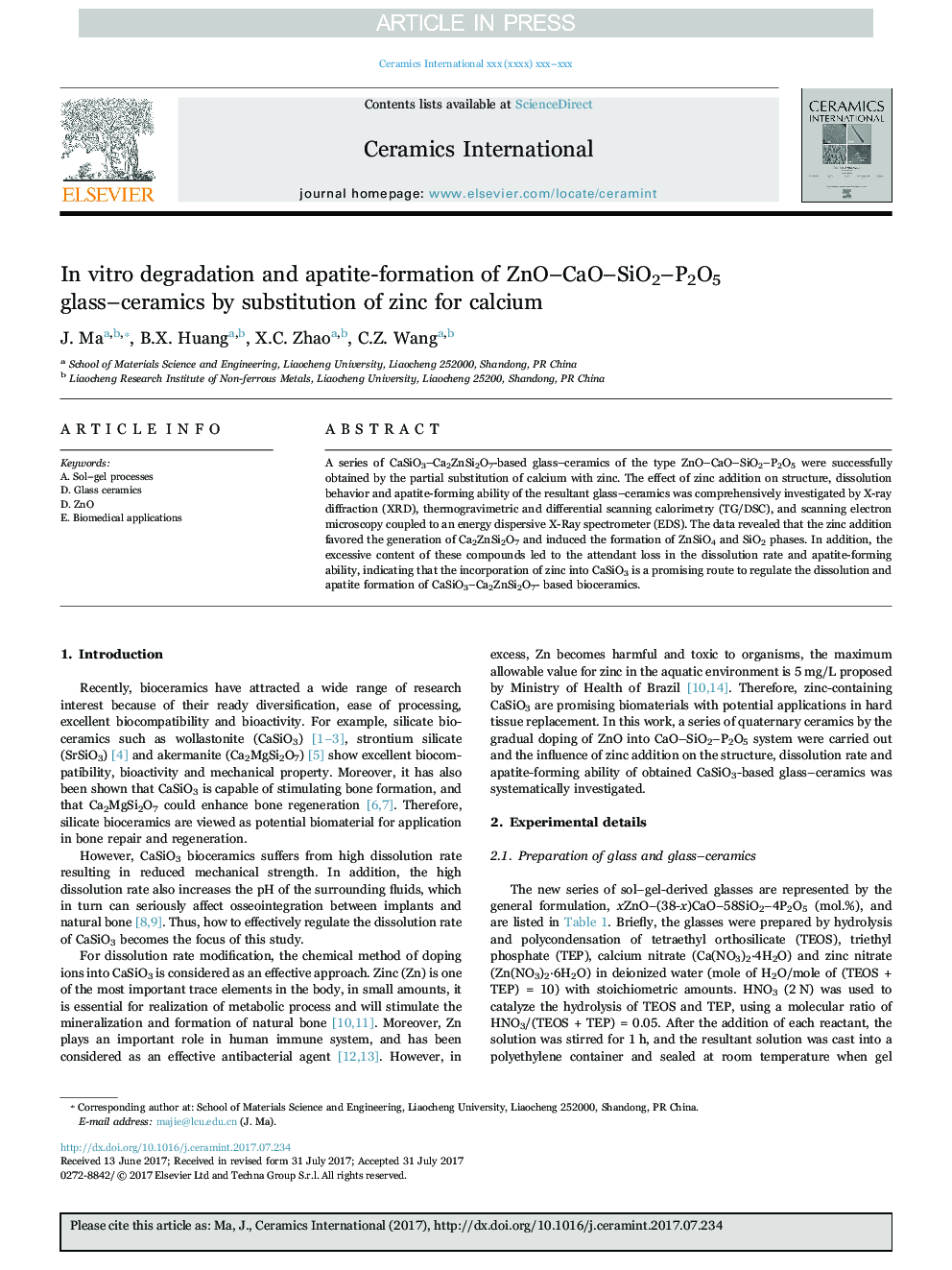| Article ID | Journal | Published Year | Pages | File Type |
|---|---|---|---|---|
| 5437367 | Ceramics International | 2017 | 7 Pages |
Abstract
A series of CaSiO3-Ca2ZnSi2O7-based glass-ceramics of the type ZnO-CaO-SiO2-P2O5 were successfully obtained by the partial substitution of calcium with zinc. The effect of zinc addition on structure, dissolution behavior and apatite-forming ability of the resultant glass-ceramics was comprehensively investigated by X-ray diffraction (XRD), thermogravimetric and differential scanning calorimetry (TG/DSC), and scanning electron microscopy coupled to an energy dispersive X-Ray spectrometer (EDS). The data revealed that the zinc addition favored the generation of Ca2ZnSi2O7 and induced the formation of ZnSiO4 and SiO2 phases. In addition, the excessive content of these compounds led to the attendant loss in the dissolution rate and apatite-forming ability, indicating that the incorporation of zinc into CaSiO3 is a promising route to regulate the dissolution and apatite formation of CaSiO3-Ca2ZnSi2O7- based bioceramics.
Related Topics
Physical Sciences and Engineering
Materials Science
Ceramics and Composites
Authors
J. Ma, B.X. Huang, X.C. Zhao, C.Z. Wang,
